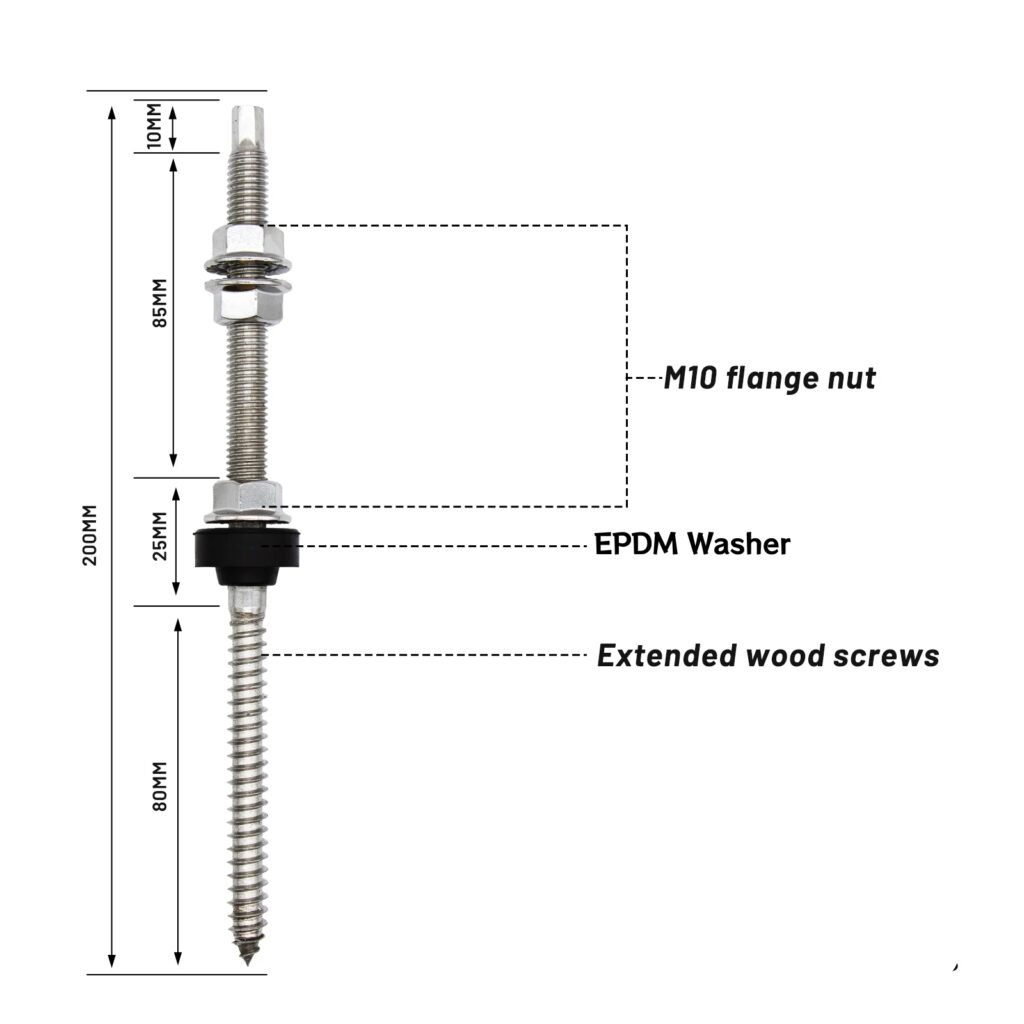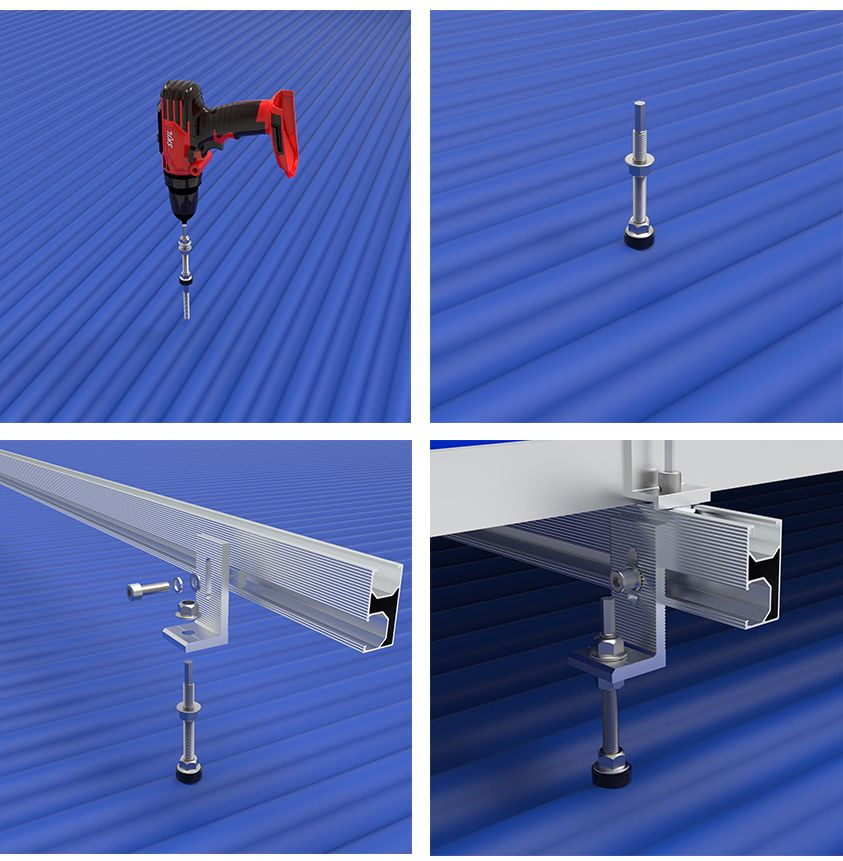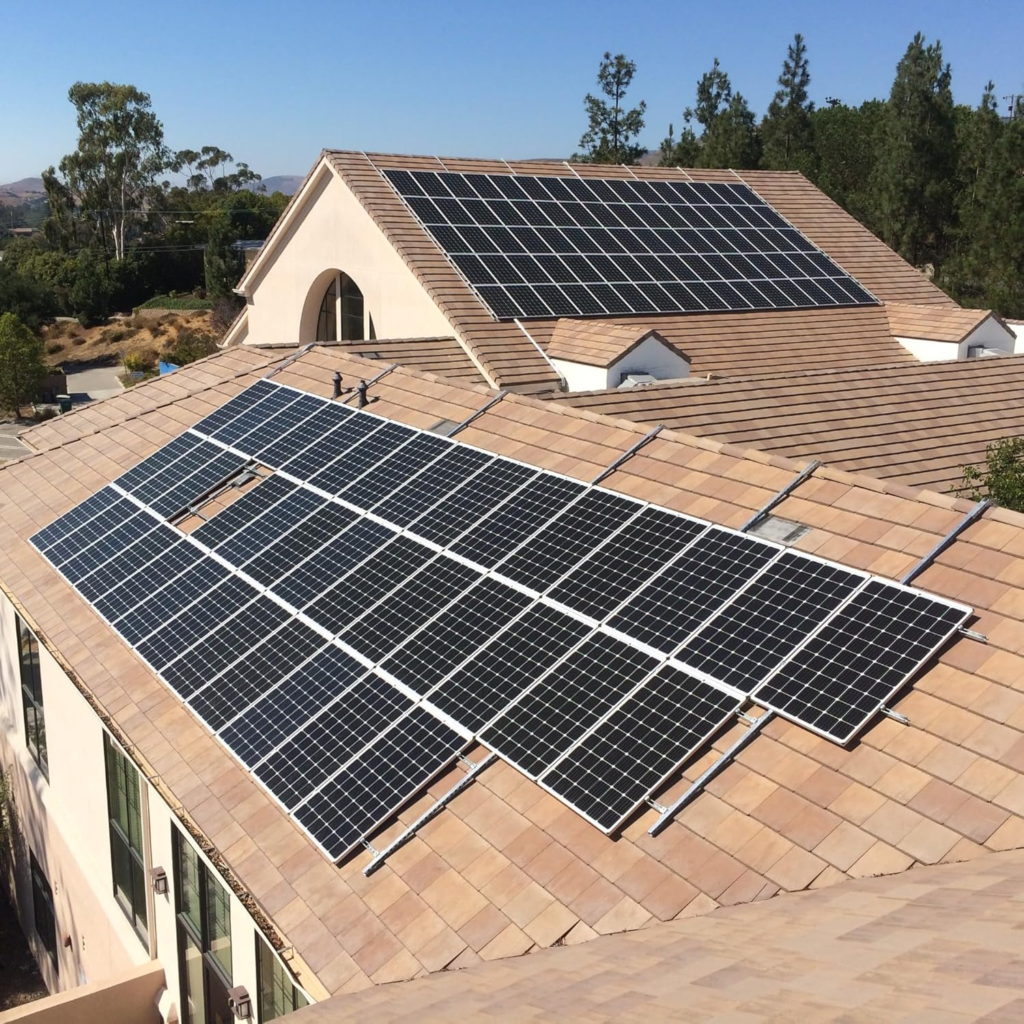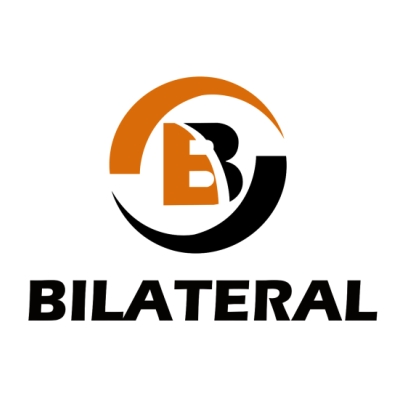Abstract
In the global rooftop solar installation market, pitched roofs are the most common yet technically challenging structures. This article examines the primary challenges of installing PV systems on concrete tile and metal tile roofs, outlines the distinct advantages of the solar hanger bolt, and compares it with alternative solutions. The goal is to help project planners and installers make the best-informed decision for long-term reliability and efficiency.
1. Core Challenges of Pitched Roof PV Installation
Pitched roofs are widely used in residential and commercial buildings worldwide, valued for their aesthetics, protection, and excellent drainage. However, their complexity makes solar installation more demanding. Concrete tile and metal tile roofs, in particular, present unique technical challenges for fastening systems.
1.1 Waterproofing: The Invisible Guardian of Roof Longevity and System Efficiency
Any PV system installation involves drilling or penetrating the roof surface, and waterproofing is always the top concern.
- Concrete tiles: Hard but brittle, prone to cracking during drilling, which may damage the underlayment waterproof membrane.
- Metal tiles: While structurally strong, cut edges from drilling are highly susceptible to rust and corrosion if not properly treated.
Key point: A solar PV plant is designed for 25 years or more of operation. Inadequate waterproofing can lead to costly roof leaks and maintenance, regardless of system efficiency.
1.2 Structural Stability: The Foundation of System Safety
PV arrays must withstand wind, snow, and even seismic loads. Reliable anchoring must reach the structural rafters or purlins, not just the tile surface.
- Only by fastening directly into the structural wood members can the system resist extreme weather.
- On large-span or high-rise buildings, ensuring equal force distribution across all fastening points is critical to avoid hidden cracks in panels.
1.3 Complex Tile Profiles: A Challenge for Installation Compatibility
Roof tiles come in diverse profiles, such as:
- Flat tiles
- Curved or S-shaped tiles
- Roman or decorative tiles
This diversity requires highly adaptable mounting solutions. Poorly matched fasteners may prevent proper tile refitting, create stress points, or damage the roof’s integrity and aesthetics.

2. Solar Hanger Bolts – The Ideal Penetrative Solution for Concrete and Metal Tile Roofs
When facing the three main challenges—waterproofing, structural stability, and tile compatibility—the solar hanger bolt offers a balanced and highly reliable solution.
2.1 Key Advantages
Advantage 1: Dual Waterproofing Protection
- EPDM washer: UV- and weather-resistant, forming an active elastic seal.
- Metal flashing: Passively redirects water flow away from the penetration point.
Together, they provide a dual-protection system with long-term waterproof reliability.
Advantage 2: Strong Structural Anchorage
- The wood-thread end of the hanger bolt embeds deeply into rafters or purlins.
- Provides superior pull-out and shear resistance, ensuring stability under heavy wind and snow loads.
Advantage 3: Easy Installation with Minimal Roof Disturbance
- Requires only precise drilling—no lifting, grinding, or cutting tiles.
- Reduces risks of tile breakage and improves overall installation efficiency.
Advantage 4: High Flexibility and Adjustability
- The adjustable nut system allows vertical fine-tuning of rail height.
- Ensures all PV rails are aligned, preventing uneven loads and maintaining both aesthetics and long-term panel safety.

2.2 Standard Installation Workflow
- Marking: Locate rafters using a rafter detector or measurement.
- Drilling: Select drill bits according to roof material (e.g., diamond for concrete, HSS for metal).
- Bolt Installation: Apply sealant to the wood thread and screw into the rafter at the required torque.
- Waterproofing: Install the EPDM washer and insert the flashing under the upper tile for complete coverage.
- Mounting Rails: Fix the L-foot or adapter plate onto the machine-thread end and tighten securely.

3. Alternative Installation Methods and Comparison
While hanger bolts are widely preferred, alternative pitched roof mounting options exist:
3.1 Tile Replacement Mounts
- Advantages: No drilling, excellent waterproofing, seamless integration with roof aesthetics.
- Disadvantages: High cost, requires exact replacement tiles for color, shape, and size matching.
3.2 Solar Tile Hooks
- Advantages: Mature solution, available for various tile types.
- Disadvantages: Installation is complex—often requires lifting or grinding tiles, increasing risk of breakage.
Compared with these options, hanger bolts stand out for universality, cost-effectiveness, and installation efficiency.
| Dimension | Solar Hanger Bolt | Tile Replacement Mounts | Solar Hooks |
|---|---|---|---|
| Waterproofing | Excellent – Dual protection (EPDM washer + flashing) ensures long-term sealing | Outstanding – No drilling, fully waterproof | Moderate – Relies on installer skill; lifting/grinding tiles may compromise sealing |
| Structural Stability | High – Wood-thread end anchored into rafters, strong pull-out & shear resistance | Good – Stable once replacement tile is fixed | Acceptable – Stability depends on accuracy of installation |
| Installation Efficiency | High – Simple drilling, minimal roof disturbance | Low – Requires customized tiles, complex process | Medium – Requires lifting or grinding tiles, more labor-intensive |
| Cost | Low – Cost-effective and widely used | High – Custom components, higher material cost | Medium – Affordable components but higher labor cost |
| Compatibility | Strong – Fits most concrete & metal tile roofs | Limited – Must match existing tile shape/color | Strong – Adapts to many tile profiles but labor-dependent |
| Best Use Case | Standard residential & commercial roofs where cost-efficiency and speed are priorities | Premium residences & heritage buildings requiring non-invasive aesthetics | Projects with diverse tile types where flexibility is prioritized over efficiency |
4. Conclusion and Recommendations
Pitched roof PV installations require a solution that balances waterproofing, stability, and compatibility.
- For most residential and commercial projects, the solar hanger bolt is the most economical, efficient, and long-term reliable solution.
- For heritage or high-end residential projects where tile drilling is not acceptable, tile replacement mounts may be considered despite the higher cost.
💡 Expert Tip: Always conduct a professional assessment of roof structure, tile type, local weather, and building codes before choosing a system.

FAQ
Q1: How long can the waterproofing of hanger bolts last?
A: With EPDM washers and flashing installed correctly, the waterproofing lifespan matches the PV system—typically 25+ years.
Q2: Are hanger bolts suitable for all types of tiled roofs?
A: They are ideal for most concrete and metal tile roofs with solid wooden rafters or purlins beneath. For historic or non-standard tiles, professional evaluation is recommended.
Q3: How do hanger bolts compare to tile hooks in cost and efficiency?
A: Hanger bolts are faster to install, more universal, and reduce labor costs. Tile hooks are versatile but require more complex procedures, resulting in higher installation time and costs.
About Us
Suzhou Bilateral Import and Export Co., Ltd.
We are a professional supplier of solar mounting systems and solar accessories, offering comprehensive pitched roof solutions. Our product portfolio includes:
- Solar Hanger Bolts
- Solar Flat Roof Mounting System
- Solar Pitched Roof Mounting System
- Middle Clamps, Side Clamps
- Solar Fasteners
- Stainless Steel Fasteners(Screws, Bolts, Nuts, Washers, Rivets, etc.)
Our solutions are widely applied in residential, commercial, and utility-scale PV projects. With premium stainless-steel materials and strict quality control, we ensure long-term reliability and system safety.
📩 Contact us today for technical consultation and customized product selection to make your pitched roof PV project safer, faster, and more cost-effective.
🔗 Website: www.szbolts.com



